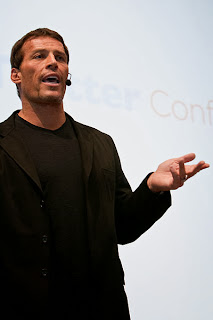Steve Andreas, born John O. Stevens, later Steve Stevens, is an American psychotherapist
and author specializing in Neuro-linguistic programming. Steve Andreas is the
son of Barry Stevens, a writer and well-known gestalt therapist. He founded
Real People Press, a publisher of works on psychology and personal change in
1967, in order to publish a book by Carl Rogers and Barry Stevens entitled
Person to Person.
Andreas worked as a chemist until 1958, then went to graduate school at
Brandeis University under Abraham Maslow for two years, receiving an MA in
psychology. After working as a chemist again for a year, he got a junior
college teaching credential, and taught psychology and social science at Diablo
Valley College in Pleasant Hill CA for 7 years. He was introduced to Gestalt
therapy in 1967, and edited Fritz Perls' books, Gestalt Therapy Verbatim and In
and Out the Garbage Pail, and wrote Awareness, a book of exercises based on
Gestalt Therapy in 1971. He became interested in Neuro-linguistic programming
in 1977 and has been active in the field ever since. In 1979 Steve Andreas and
Connirae Andreas established NLP of Colorado, now known as NLP Comprehensive,
to develop the training arm of their business. They transferred ownership of
NLP Comprehensive to Tom Dotz in 1998. Steve Andreas' most recent book,
Transforming Negative Self-Talk: Practical, Effective Exercises, was published
by Norton in 2012.
Connirae Andreas is an American author and psychotherapist who is known for her work within
the field of Neuro-linguistic programming (NLP). Connirae Andreas studied
undergraduate psychology at the University of Kansas in 1975. She obtained a MA
in clinical psychology from the University of Colorado in 1979 and a PhD in
psychotherapy from North Central University in 1989. She is the originator of
the Core Transformation process and continues to teach and develop that process
with her sister, Tamara Andreas. Their book Core Transformation has been
published in 12 languages in 12 different countries.
Connirae Andreas has worked with her husband Steve Andreas since 1977. They
have done pioneering work in multiple areas of NLP, including language
patterns, time lines, and dealing with mourning and shame. They have published
several books on NLP through the publishing business established by Steve
Andreas, Real People Press. Real People Press has published popular books by
Hugh Prather, Michael Colgrass, Eloise Ristad, and Leslie and Michael Lebeau.
Notes to Myself by Hugh Prather was originally published by Real People press
in 1970 and was on the New York Times bestseller list for over a year.
They edited and published the first popular book on NLP, Frogs Into Princes
which sold over 500,000 copies. They still own this business which publishes
books on psychology and personal change. The couple is also known for their
work on the transcription of several early NLP seminars.
They edited several books of the work of the founders of NLP Richard
Bandler and John Grinder, including Trance-Formations and Using Your Brain for
a Change. In 1979 she and her husband established NLP Comprehensive, based in
Colorado, to organize NLP trainings. In 1995 they sold NLP Comprehensive to
Lara Ewing, one of their NLP consulting trainers. The company was subsequently
sold in 1998 to Tom Dotz, who had founded the NLP Institute of California.







